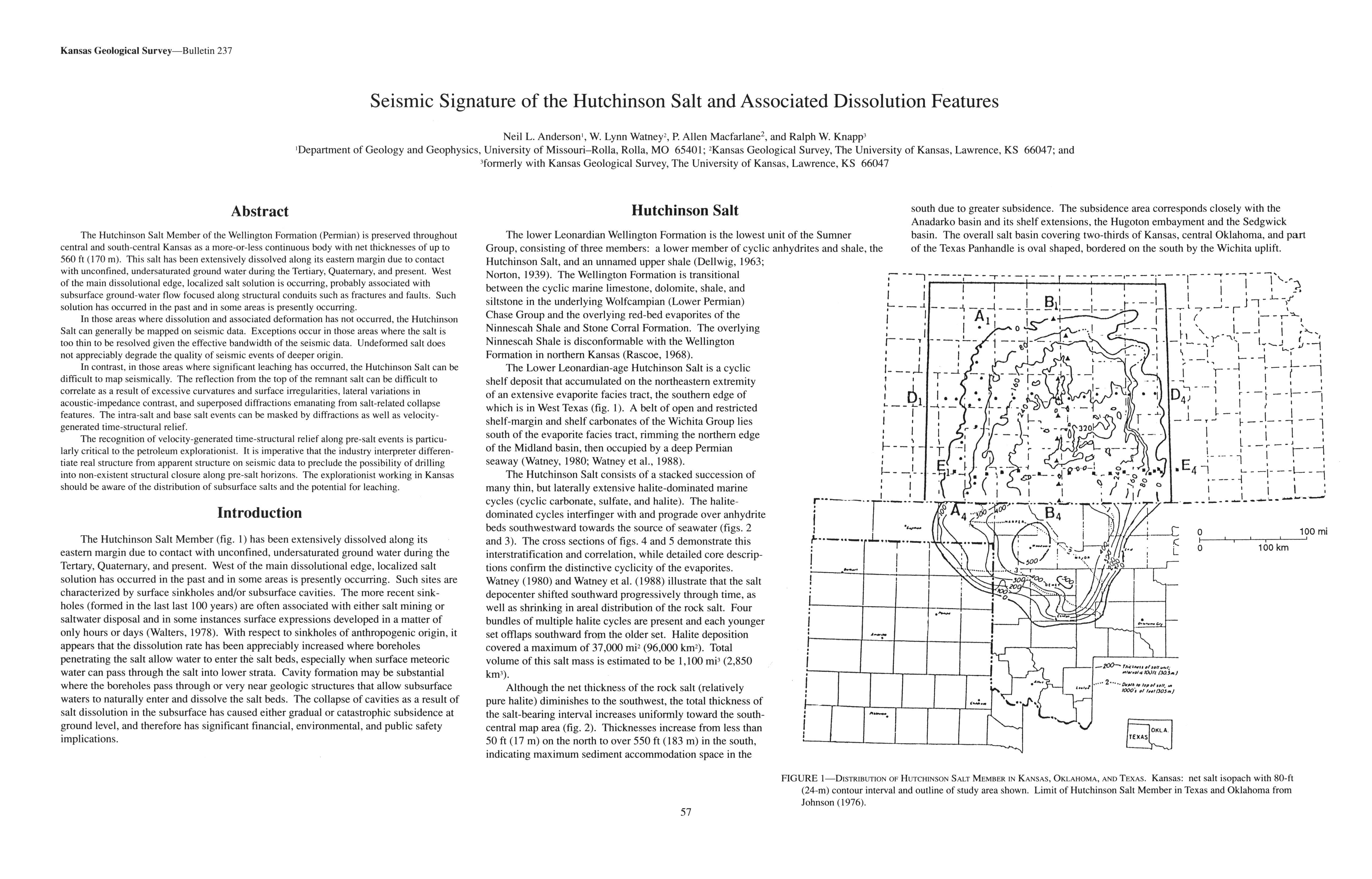Seismic Signature of the Hutchinson Salt and Associated Dissolution Features
DOI:
https://doi.org/10.17161/kgsbulletin.no.237.20424Abstract
The Hutchinson Salt Member of the Wellington Formation (Permian) is preserved throughout central and south-central Kansas as a more-or-less continuous body with net thicknesses of up to 560 ft (170 m). This salt has been extensively dissolved along its eastern margin due to contact with unconfined, undersaturated ground water during the Tertiary, Quaternary, and present. West of the main dissolutional edge, localized salt solution is occurring, probably associated with subsurface ground-water flow focused along structural conduits such as fractures and faults. Such solution has occurred in the past and in some areas is presently occurring.
In those areas where dissolution and associated deformation has not occurred, the Hutchinson Salt can generally be mapped on seismic data. Exceptions occur in those areas where the salt is too thin to be resolved given the effective bandwidth of the seismic data. Undeformed salt does not appreciably degrade the quality of seismic events of deeper origin.
In contrast, in those areas where significant leaching has occurred, the Hutchinson Salt can be difficult to map seismically. The reflection from the top of the remnant salt can be difficult to correlate as a result of excessive curvatures and surface irregularities, lateral variations in acoustic-impedance contrast, and superposed diffractions emanating from salt-related collapse features. The intra-salt and base salt events can be masked by diffractions as well as velocity-generated time-structural relief.
The recognition of velocity-generated time-structural relief along pre-salt events is particularly critical to the petroleum explorationist. It is imperative that the industry interpreter differentiate real structure from apparent structure on seismic data to preclude the possibility of drilling into non-existent structural closure along pre-salt horizons. The explorationist working in Kansas should be aware of the distribution of subsurface salts and the potential for leaching.
Downloads

